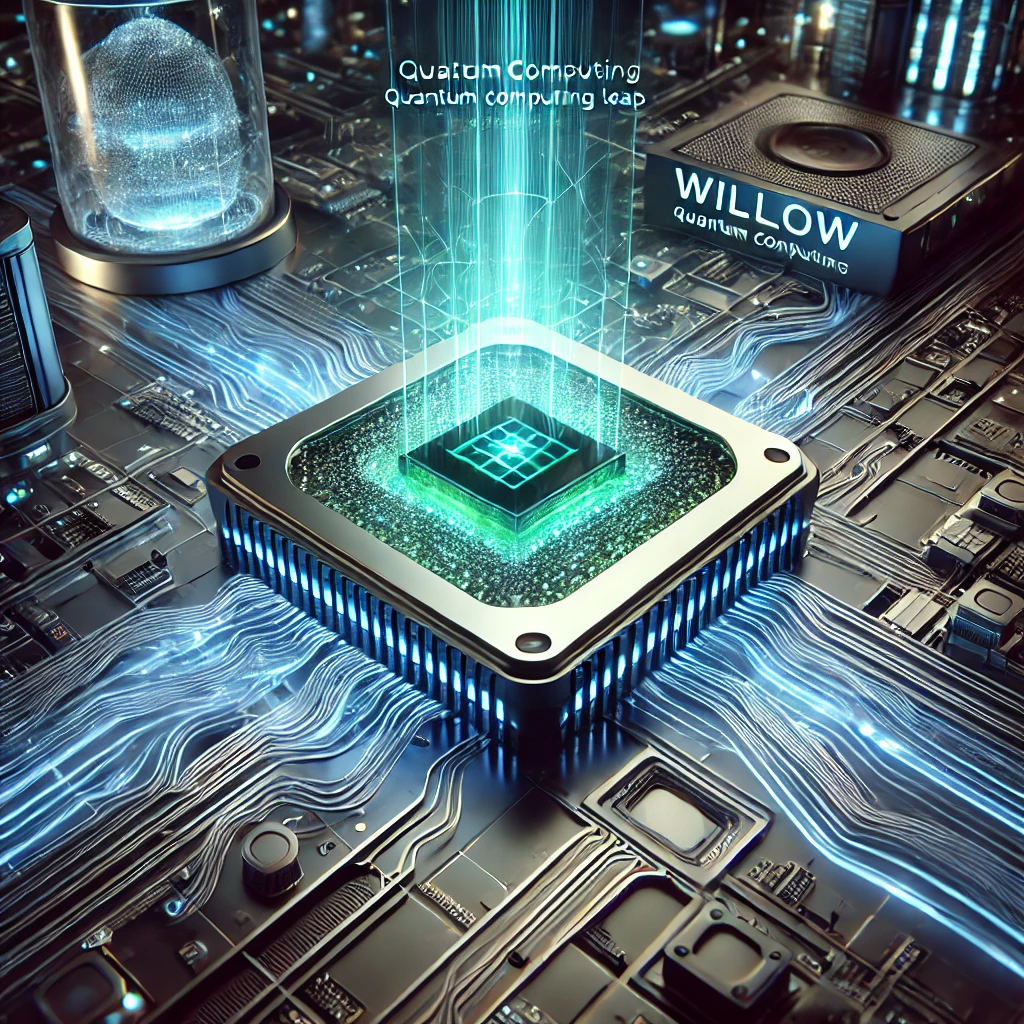Google's new quantum chip achieves a groundbreaking feat: solving problems in under 5 minutes that would take the fastest supercomputer an astonishing 10 septillion years.
Quantum computing is undergoing a monumental transformation with Willow, Google’s latest quantum chip. This innovative chip sets new benchmarks in the field, showcasing unprecedented performance and solving problems previously deemed impossible for classical computers. Let’s explore Willow’s capabilities, achievements, and the road ahead.
Exponential Error Reduction with Quantum Error Correction
Errors have long been a challenge in quantum computing, as qubits—the fundamental units of quantum computers—are prone to interacting with their environment, compromising computations. Willow has achieved a breakthrough in quantum error correction, demonstrating an exponential reduction in error rates as the number of qubits scales up.
Below Threshold Error Correction
- Willow successfully reduced errors while scaling qubits in grids of 3×3, 5×5, and 7×7, achieving a critical milestone in the field known as “below threshold.”
- It is the first system to convincingly prototype a scalable logical qubit, an essential step toward building commercially viable quantum computers.
Real-Time Error Correction
- Willow demonstrated real-time error correction in a superconducting quantum system, extending qubit lifetimes beyond individual physical qubits—an unprecedented achievement.
Mind-Boggling Computational Power
Willow completed a random circuit sampling (RCS) computation in under five minutes, a task that would take today’s fastest supercomputers 10 septillion years—a period vastly exceeding the age of the universe.
Why This Matters
- RCS serves as a benchmark to confirm that quantum computers are performing tasks that are impossible for classical machines.
- Willow’s performance underscores the growing gap between quantum and classical computing, paving the way for tackling complex problems that classical computers cannot handle.
Cutting-Edge Fabrication and Design
Willow was created in Google’s state-of-the-art fabrication facility in Santa Barbara, optimized for quantum chip production. The focus on quality over quantity has led to:
- Integration of all chip components, ensuring seamless performance.
- A leap to 105 high-quality qubits, achieving best-in-class performance.
- Improved qubit retention times (T1), now averaging nearly 100 microseconds—a 5x improvement over previous generations.
Towards Real-World Applications
While Willow’s current benchmarks showcase computational supremacy, the next goal is achieving useful, beyond-classical computations that solve real-world problems. Google Quantum AI envisions applications in:
- Medicine: Discovering new drugs and therapies.
- Energy: Designing more efficient batteries and advancing fusion research.
- Artificial Intelligence: Enabling breakthroughs in training algorithms and simulating quantum systems.
Why Quantum AI Matters
Quantum computing isn’t just about speed; it’s about unlocking the potential of nature’s most fundamental laws. As noted by Google Quantum AI’s founder, quantum computing complements AI, offering scaling advantages that classical systems cannot. Together, these technologies promise to tackle humanity’s greatest challenges, from climate change to sustainable energy.



